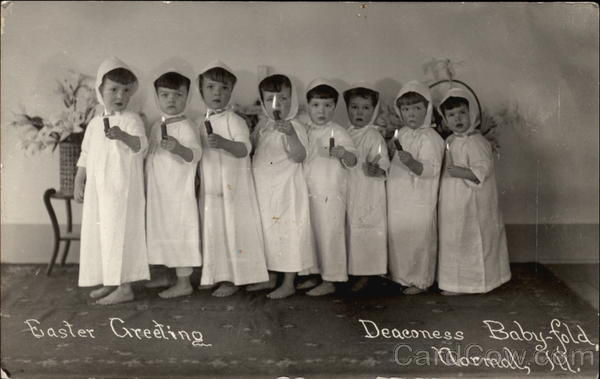The Baby Fold during the Depression
- Rochelle Gridley

- Feb 22, 2019
- 3 min read
During the Depression The Baby Fold was important place of refuge for the youngest children affected by the economic disaster. Mrs. Asher was the manager of the Baby Fold from 1908 until 1936. She had brought the Baby Fold out of debt through her careful management. During the thirties the twin cities had a fund drive that supplied all of the charitable services in the area, which was an attempt to improve the fund raising of each organization. The Baby Fold would receive its share of contributions based on a pre agreed plan each year. In 1932, there were 63 babies and a budget of just $1200 from the fund drive. The additional $16,000 necessary to its operations would be raised by the Fold itself. The Fold did have a farm on which food could be produced, but 30 women assisted the manager in addition to a farm manager. Churches and schools frequently had "showers" for the Fold to provide them with food and clothing for the children.

In 1933 the Fold faced very hard times. Mrs. Asher reported that she was forced to dip into the reserves, which were meant for maintaining the buildings owned by the Fold. Nurses at the home gave up part of their salaries so the children would have sufficient food. Photo postcards from the Fold must have been a good fundraiser, but the population of the home was much higher than previous years during the Depression. The children were cared for in "family" units of six children to each family, with one "mother" responsible for each family.
A year earlier, the Pantagraph published another story of a child entrusted to The Baby Fold. This girl was left by her mother, who didn't give a name, but indicated the father had abandoned the family. The girl grew up at The Baby Fold until she was six years old, the maximum age of the children at The Baby Fold. By that time it had been discovered that the girl could neither speak nor hear. When she was six years old she was sent to live at the Girl's Industrial Home and then to the Jacksonville Deaf School. While at the Deaf School she had no place to spend the holiday periods, so she was found homes where she could work for her board during the holidays. Her ultimate living place was at a local hospital, where she was given a room to live in and worked for her keep. (I searched for such a person in the census, but could not determine where she was living in 1940.)
In October 1937 the Pantagraph reported on the status of a toddler entrusted to The Baby Fold. Little Jimmy was brought to the home during the winter of 1937. His father and fourteen year old brother brought him from four miles outside Bloomington, pulling him on a sled through a snow storm. The mother of the boy had abandoned the family of five children two years earlier. Although the father tried for two years, he was unable to cope with the toddler and felt he had no option but to give his son to the Baby Fold. After spending several months at the Baby Fold Jimmy was a chubby happy boy.
In 1939, after her retirement, Mrs. Asher was still working with the Baby Fold in some capacity as shown in the story of the following woman. Helen Stephenson, a child adopted through the Fold, was orphaned by the deaths of her adoptive parents at the age of 27. She sought out her birth mother through the Fold, and Mrs. Asher was able to tell her her mother's name and location. Miss Stephenson planned to reunite with her mother. There was no indication of any red tape that had to be dealt with before Mrs. Asher made the revelation of the mother's name, and Mrs. Asher indicated that the event was not a novel one in her experience.




Comments